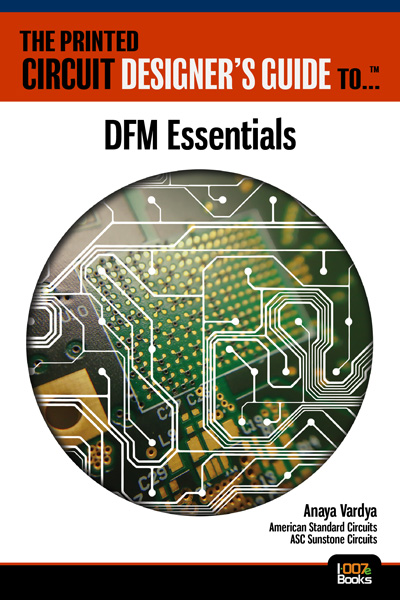-

- News
- Books
Featured Books
- smt007 Magazine
Latest Issues
Current Issue
Spotlight on Mexico
Mexico isn’t just part of the electronics manufacturing conversation—it’s leading it. From growing investments to cross-border collaborations, Mexico is fast becoming the center of electronics in North America. This issue includes bilingual content, with all feature articles available in both English and Spanish.

Production Software Integration
EMS companies need advanced software systems to thrive and compete. But these systems require significant effort to integrate and deploy. What is the reality, and how can we make it easier for everyone?

Spotlight on India
We invite you on a virtual tour of India’s thriving ecosystem, guided by the Global Electronics Association’s India office staff, who share their insights into the region’s growth and opportunities.
- Articles
Article Highlights
- Columns
- Links
- Media kit
||| MENU - smt007 Magazine
Wearable, Low-Cost Sensor to Measure Skin Hydration
January 31, 2017 | NC State UniversityEstimated reading time: 2 minutes
Researchers from North Carolina State University have developed a wearable, wireless sensor that can monitor a person’s skin hydration for use in applications that need to detect dehydration before it poses a health problem. The device is lightweight, flexible and stretchable and has already been incorporated into prototype devices that can be worn on the wrist or as a chest patch.
The hydration sensors consist of two electrodes made of an elastic polymer composite that contains conductive silver nanowires.
“It’s difficult to measure a person’s hydration quantitatively, which is relevant for everyone from military personnel to athletes to firefighters, who are at risk of health problems related to heat stress when training or in the field,” says John Muth, a professor of electrical and computer engineering at NC State and co-corresponding author of a paper describing the work.
“We have developed technology that allows us to track an individual’s skin hydration in real time,” says Yong Zhu, an associate professor of mechanical and aerospace engineering at NC State and co-corresponding author of the paper. “Our sensor could be used to protect the health of people working in hot conditions, improve athletic performance and safety, and to track hydration in older adults or in medical patients suffering from various conditions. It can even be used to tell how effective skin moisturizers are for cosmetics.”
The new sensor, which tracks an individual’s skin hydration in real time, can be incorporated into a wearable patch. Photo credit: Shanshan Yao.
The sensor consists of two electrodes made of an elastic polymer composite that contains conductive silver nanowires. These electrodes monitor the electrical properties of the skin. Because the skin’s electric properties change in a predictable way based on an individual’s hydration, the readings from the electrodes can tell how hydrated the skin is.
In lab testing using custom-made artificial skins with a broad range of hydration levels, the researchers found that the performance of the wearable sensor was not affected by ambient humidity. And the wearable sensors were just as accurate as a large, expensive, commercially available hydration monitor that operates on similar principles, but utilizes rigid wand-like probes.
The researchers also incorporated the sensors into two different wearable systems: a wristwatch and an adhesive patch that can be worn on the chest. Both the watch and the patch wirelessly transmit sensor data to a program that can run on a laptop, tablet or smartphone. This means the data can be monitored by the user or by a designated third party – such as a doctor in a hospital setting, or an officer in a military setting.
What’s more, the sensor is relatively inexpensive.
“The commercially available monitor we tested our system against costs more than $8,000,” says Shanshan Yao, a Ph.D. student at NC State and lead author of the paper. “Our sensor costs about one dollar, and the overall manufacturing cost of the wearable systems we developed would be no more than a common wearable device, such as a Fitbit.”
The paper, “A Wearable Hydration Monitor with Conformal Nanowire Electrodes,” is published in the journal Advanced Healthcare Materials. The paper was co-authored by Amanda Myers and Abhishek Malhotra, Ph.D. students at NC State; Feiyan Lin, a former graduate student at NC State; and Alper Bozkurt, an associate professor of electrical and computer engineering at NC State.
Testimonial
"In a year when every marketing dollar mattered, I chose to keep I-Connect007 in our 2025 plan. Their commitment to high-quality, insightful content aligns with Koh Young’s values and helps readers navigate a changing industry. "
Brent Fischthal - Koh YoungSuggested Items
Nortech Systems Incorporated Earns AS9100 Certification for Monterrey, Mexico Facility
11/04/2025 | BUSINESS WIRENortech Systems, Incorporated, a leading provider of design and manufacturing solutions for complex electromedical devices and electromechanical systems, announced that its Monterrey, Mexico, facility has achieved AS9100:D certification.
PsiQuantum, Lockheed Martin Form Strategic Collaboration to Accelerate Quantum Computing for Aerospace and Defense
11/04/2025 | BUSINESS WIREPsiQuantum and Lockheed Martin have signed a memorandum of understanding (MoU) to accelerate the development of quantum computing applications in aerospace and defense.
Aircraft Wire and Cable Market to surpass USD 3.2 Billion by 2034
10/30/2025 | Global Market Insights Inc.The global aircraft wire and cable market was valued at USD 1.8 billion in 2024 and is estimated to grow at a CAGR of 5.9% to reach USD 3.2 billion by 2034, according to recent report by Global Market Insights Inc.
Honeywell Announces Updated Business Segment Structure Ahead Of Aerospace Spin-Off
10/28/2025 | HoneywellHoneywell announced its updated business segment structure ahead of the planned separation of its Aerospace Technologies business, expected in the second half of 2026, and its Solstice Advanced Materials business, expected to be completed on October 30, 2025.
Lockheed Martin Signs Strategic Partnership Framework with Korean Air
10/28/2025 | Lockheed MartinLockheed Martin is collaborating with Korean Air to explore opportunities to support the U.S. government’s (USG) Regional Sustainment Framework (RSF) initiative, as well as expand Maintenance, Repair, Overhaul & Upgrade (MROU) cooperation to third-country markets.


